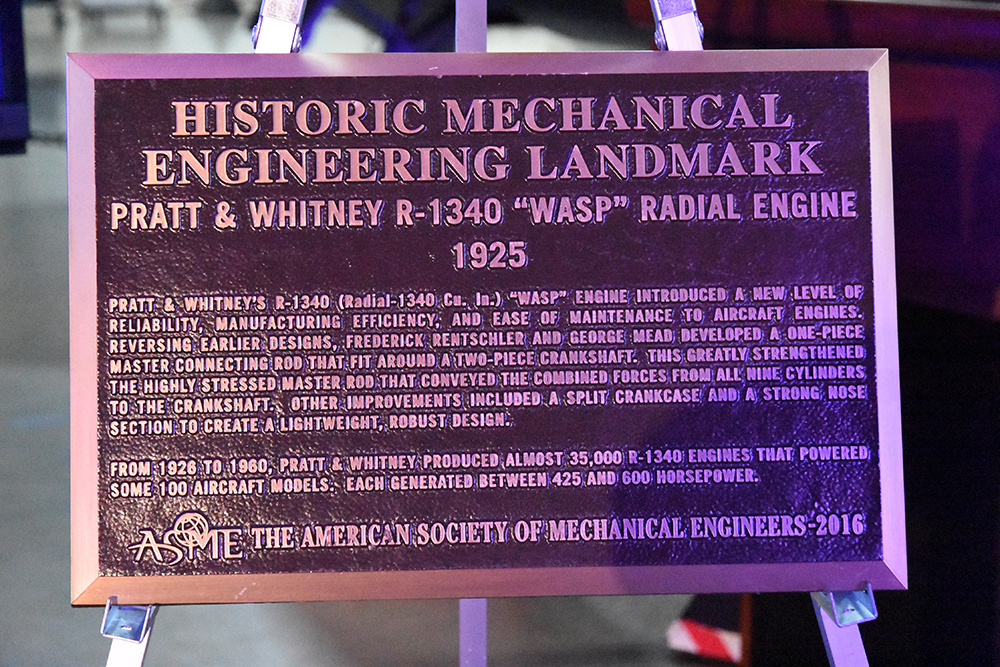#260 Pratt & Whitney R-1340 Wasp Radial Engine
1925
Aircraft engines, considered unreliable during the first 20 years of aviation due to their need for liquid-cooling, heavy weight and other inconsistencies, were given a revolutionary boost with the development of Pratt & Whitney’s R-1340 Wasp Radial Engine in 1925.
Engineers led by Chief Executive Officer Fredrick Rentschler, Vice President of Engineering George Mead, and Chief Engineer Andy Willgoos implemented a number of improvements: a single piece master rod allowed the engine to operate at a higher number of revolutions per minute, producing more horsepower; a two-piece crankshaft able to maintain required tolerances – making the single piece master rod possible; and a split crankcase with two identical halves. This improve the engine’s manufacturability, reducing assembly time and complexity.
These innovations set a new standard for aircraft engine reliability, impacting commercial aviation and transcontinental mail service, and leading to more advanced aircraft in the late 1920s and early 1930s – such as the Boeing 247. Over 90 versions of the R-1340 engine are in operation today.

Landmark Location
New England Air Museum,
36 Perimeter Road,
Windsor Locks, CT 06096
Visiting Info
Open 10:00 am to 5:00 pm Tuesday to Sunday.
Closed on Easter, Thanksgiving, Christmas Eve, Christmas Day, New Year’s Eve and New Year’s Day
https://www.neam.org/
(860) 623-3305
Ceremony Notes
August 27, 2015. Plaque presented by ASME President Julio Guerrero.


